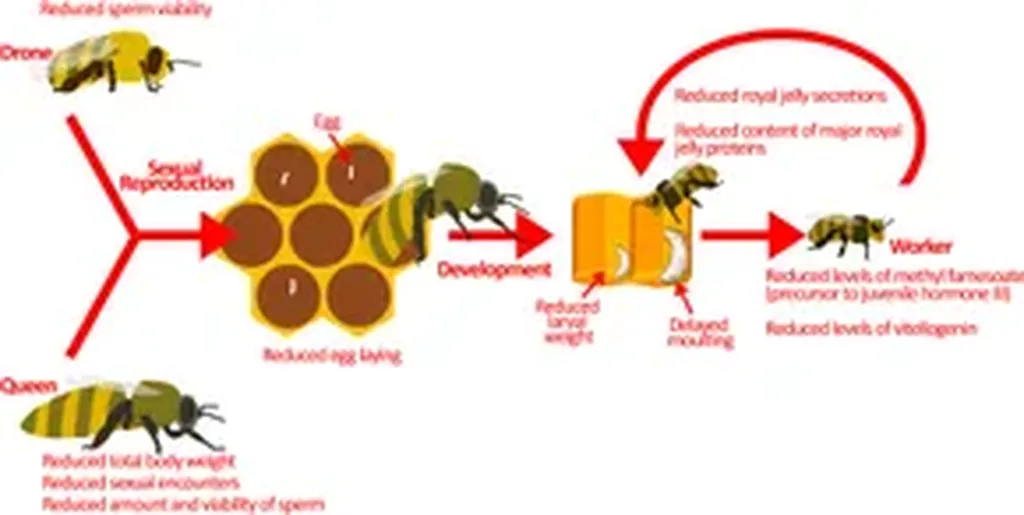In a groundbreaking study that could reshape our understanding of pesticide impacts on pollinators, researchers have uncovered alarming effects of two commonly used fungicides on honey bee drones. The study, led by Wenlong Tong from the College of Bee Science and Biomedicine at Fujian Agriculture and Forestry University in China, sheds light on the often-overlooked reproductive castes of honey bees, specifically drones, and their susceptibility to azoxystrobin and picoxystrobin.
Honey bees, particularly the Italian honey bee (Apis mellifera ligustica), are vital pollinators in both natural ecosystems and agricultural production. However, their populations have been declining due to various factors, including pesticide exposure. While much attention has been given to worker bees, the impact on drones—male bees crucial for genetic diversity and colony resilience—has remained understudied until now.
Tong and his team exposed honey bee drones to different concentrations of azoxystrobin and picoxystrobin for 14 days, monitoring survival rates, body weight, nutrient content, reproductive organs, and sperm concentration. The results were stark. “We observed a significant reduction in drone survival rates, with the effects becoming more pronounced as the duration of exposure increased,” Tong explained. This decline in survival was accompanied by a notable decrease in body weight compared to the control group.
Nutrient analysis revealed a complex interplay of effects. Low concentrations of the fungicides increased protein levels, while free fatty acid content decreased significantly across all treatment groups. Interestingly, total carbohydrate content remained unchanged, suggesting a targeted impact on specific metabolic pathways.
The study also delved into the morphological and reproductive health of the drones. “The lengths of the mucus glands and seminal vesicles were significantly shorter in the treatment groups compared to the control group,” Tong noted. This morphological alteration was coupled with a significant decline in sperm concentration, indicating a compromised reproductive capacity.
The implications of these findings are profound, particularly for the agricultural sector. Honey bees are essential for pollinating a wide range of crops, and any compromise in their reproductive health can have cascading effects on agricultural productivity and biodiversity. “Our study highlights the need to reassess the risks posed by these fungicides to pollinators,” Tong emphasized. “Given the critical role of drones in maintaining the genetic diversity and resilience of honey bee colonies, it is imperative to consider these findings in future pesticide regulations and agricultural practices.”
The research, published in the journal ‘Agriculture’ (translated from Chinese as ‘Nongye’), underscores the importance of a holistic approach to pollinator health. As the agricultural industry continues to rely heavily on chemical pesticides, understanding their broader ecological impacts becomes increasingly crucial. This study not only advances our knowledge of pesticide effects on honey bee drones but also calls for a reevaluation of current practices to ensure the sustainability of pollinator populations.
Looking ahead, the findings open new avenues for research into the underlying mechanisms of these effects and the development of mitigation strategies. As Tong and his team continue their work, the hope is that their research will inform policies and practices that protect these vital pollinators, ensuring the health of our ecosystems and the stability of our food systems.

